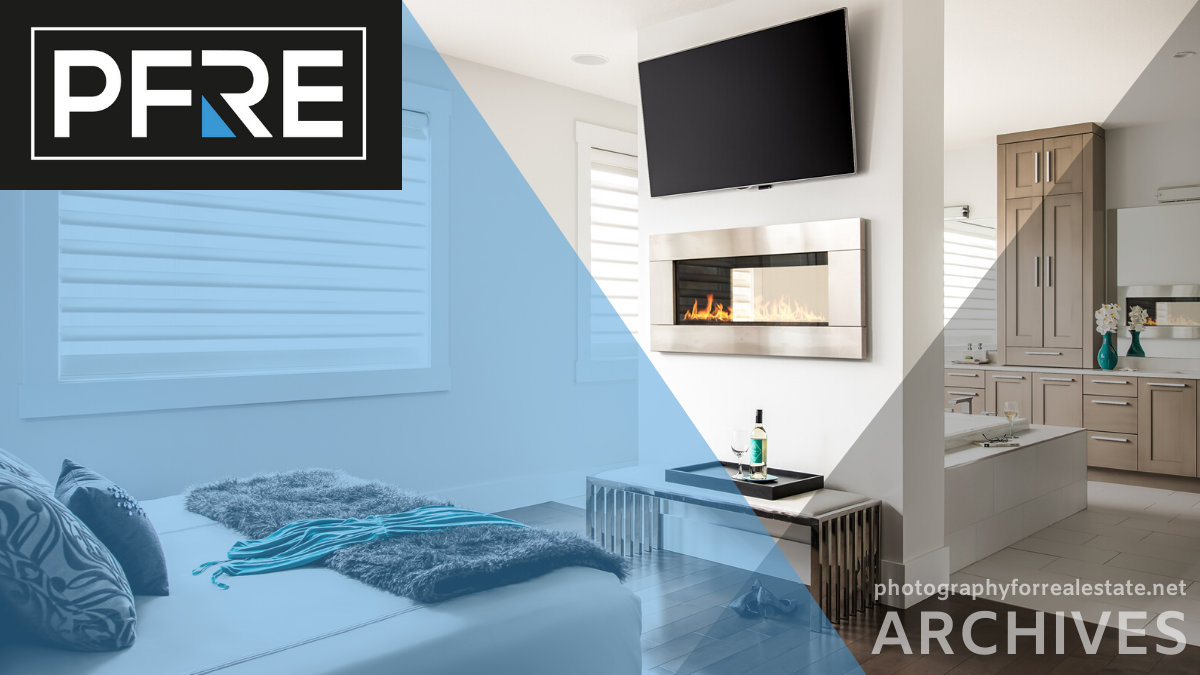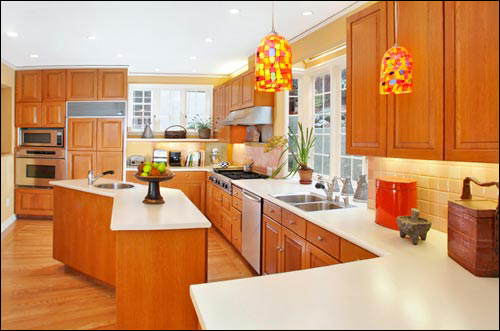
As an Amazon Associate we earn from qualifying purchases.
 Rhett asked the following question:
Rhett asked the following question:
Can you tell me what the most popular settings for shooting interiors are? Also, how would you set your flash and would you use a Gary Fong Light sphere?
Shooting interiors I usually shoot at f5.6 and white balance in Auto. then set my SB-700 to TTL. What do you think is the best metering to use for each also. For larger rooms should I use a Higher f-stop in order to capture more detail?
Jan in Florida also asked:
Can you tell me what the most popular settings for shooting interiors are?
Shooting interiors I usually shoot at f5.6 and white balance in Auto and set my SB-700 to TTL.
Your questions are classic ones and the answer to these is that the best way to use flash to shoot interiors is not to use your flash in TTL mode but to use it in manual mode and to use the process that is explained in this post by Scott Hargis. Most real estate photographers that use small flashes to light interiors use some variation of this technique. This technique is so popular that Scott has created several resources to teach this technique:
For that rare situation where you need to use an external light source, like an ETTL, I have a guide on how to pick the best flash for real estate photography.

I have watched the hargis lynda tutorials, have his ebook, etc. i practice and practice and i just cannot get the lighting down. My hdr fusions in LR look better. I Always have hotspots and shadows....anyone in los angeles willing to tutor for $?
@OP
I've found a good comfort zone around ISO 640, f/8. It gives me some headroom with small flashes in larger spaces without being too noisy in the shadows. I could push it to ISO 800, but I already feel like I'm on the edge of acceptable noise. This ISO (or higher) may work for you depending on what type of camera you own, but do your own noise tests at home to determine what your own upper threshold is. You may be surprised that ISO 800 or 1000 works, and then you can bump up your depth-of-field AND get more power from your flashes!
@Sharon
Hot spots usually mean one of three things:
1) You're shooting too wide, and therefore have no room left over to adequately hide your flash
2) If using a bounce umbrella, you need to aim your umbrella further away from walls
3) If you're bouncing off a wall/ceiling, you need to change the position of that bounce
Again, this is where thorough home testing pays off. Find a typical room in your house, set up your camera, and just start with a single flash. Try different bounce locations and angles. If you have a bounce umbrella, try different heights, chokes, and angles on that too. You'll find that slight adjustments make huge differences in how the light falls on the room and how far hotspots extend.
When I did my tests, I also included some shots that had the flash in full view so I could see exactly how the light fell on the umbrella (or wall/ceiling joint) as well as how the light spread onto the scene. For these tests, crank your widest lens to its widest view so you can see everything that's going on.
I too have been following Scott Hargis and others from this blogs methods and I agree with you Sharon that flash photography is hard, but I prefer the difference over HDR. I use 3 Nissan Di700A wireless flashes with my Sony a6000. I also have a Sony hvl f43m flash that I use with a Nissan wireless adapter. The Sony flash is much better (and more powerful) than the Nissan but also double the cost. I have yet to use 4 flashes simultaneously though. I do like the ease of use with the Nissan and air commander, as you do not need to walk to each flash to alter its power.
I have 3 Gary Fong light spheres but umbrellas seem to be better diffuses. I use the G.F. Light spheres where I can not fit an umbrella such as bouncing off a ceiling/wall joint which gives me great results.
I also shoot in in TTL mode but am going to shoot in manual mode for my flashes in the future, as I think that is part of a problem of my flash hot spots. I also need to remember to start with the flash on low power and work up to the proper exposure, as I tend to jump the gun with flash power.
I use just one flash hand held bouncing off the ceiling or walls behind. I do shoot in TTL mode as it's quicker. If I notice harsh shadows or whatever I'll turn down the FEC on my camera. Real quick and easy.
All good suggestions. Also, search for Mike Kelley on Creativelive.com for some classes. Search youtube for Rich Baum and Guess and Check photography for excellent free info.
Just buy the e-book from Scott - it will show you exactly how to do it. I shoot with up to six flashes at a time now and bracket for enFuse. I like the way the results look as do my clients.
There are no perfect settings to use. For interiors, I start at ISO 320, 1/50s and f8. My focus point is 1/3 of the way into the scene depending on the distance from the camera to the furthest object I want to be sharp. I have a handy focal distance calculator on my phone that I refer to once in a while that will tell me how much of a scene will be in focus for a given focal length and aperture. I take a test shot and change settings based on what I see on the LCD (or laptop if tethered) and the histogram. After a while, you get to know how an image is going to work in post from what you see.
Shutter speed controls the ambient light up to the max sync speed of the camera (which has nothing to do with the wireless remotes or the speedlights themselves) with no impact on the amount of lighting from the flashes. Aperture affects both ambient and flash. If I want more flash and open the aperture 1/3 of a stop, I need to speed up the shutter 1/3 of a stop to maintain the same amount of ambient lighting. Scott goes over this in his videos and it's worth the time to play with changing ratios at home with the camera tethered to the computer. It's very important to have a good grasp of the exposure triangle of shutter speed, aperture and ISO. I guess that I should mention that I always shoot interiors in manual mode. Exterior day photos I shoot in aperture priority. Twilight exteriors are in manual.
If possible, I like to have my flashes at 1/4 power or less for fast recycle times and good battery life. I use Yongnuo and Neewer flashes that are all manual. I don't want the flashes to do any thinking on their own. It's too hard to get the lighting right if the flashes keep changing power. Manual speedlights are cheap and when you break one, and you will break a few, it doesn't mean working the rest of the week to be able to replace it.
Shooting UFWA will make lighting a real chore to do in one frame. I've found that I can shoot two lit compositions faster than I can massage one wide angle bracketed photo in post. The two lit images will be mostly done in camera and take about 30 seconds in Lightroom to finish. Giving the customer two better looking, but narrower images than one less impressive wide shot makes the client much happier. That you can do it in less time, should make you happier. Tighter compositions also work better on phones and small tablets. Wide angle shots force the viewer to zoom in and out to see details. If I had a way to force viewers to use a proper sized screen, I would but people will insist on using tiny little phone screens and it's impolite to yell at them in public. The couple of agents I have pointed this out to were quick to see that I was right and that ended the demands for getting everything and the fish tank all in one photo.
It really is about trial and error.
I hand hold a flash and bounce the light into the corner of the wall and ceiling behind me. It often takes a few goes to get it right and the settings change with each shot.
My constant settings are ISO 200 f/7.1, and then flash and ss vary but I often find 1/8 sec ss and 1/8 flash are used quite often. I don't often get it right on the first shot and just chimp until it looks good, then move on to the next. You kind of get a feel for the settings after doing it for a while. practice, practice, practice 🙂
I'm all about flash too....I use both Scott Hargis and Simon Maxwell system. My next step is to try a cam ranger...but not just yet and get into some PS layering. As for gear, I use a Canon 6D, manual mode. I use YN560-TX for my hot shoe trigger and I have 6 YN 560 IV. Most of the time though I'm using 3 YN560's. One of the 560's on a light stand and the other two on a base plate. One GF dome and the other two WAD. And with my trigger, I can power up or down any of the 6 speedlites, in full stops or 1/4 stops.
I sometimes push the ISO to 640, but I like to hover around the 400 range with an fstop between 8 and 13 - sweet spot on 11 for my L lens, f2.8.
I also would like to borrow a phrase or term that Rich Baum coined..."let the ambient light do the heavy lifting." So whenever possible, I like to have the sun at my back when I shoot interior and use the flash to fill in on some shadow areas.
Lastly practice makes perfect. I'm always playing with different speedlight placement....moving it here or there and even power output. My favorites challenges are shooting deep - lighting up that distant room down the hall or a kitchen shot that looks into a dark dining room some 30 feet away. Flash is tricky no doubt, but there is a "crispness" to it that HDR can't seem to tackle. Whites are whites with flash.
@Robert
If you are shooting on a 6D you can try the free canon app and tether via wifi. They just upgraded the app and the functions arent quite as good as a cam ranger but an easy and cheap way to tether wirelessly.
I haven't tried a cam ranger yet but I know the app works great for everything I need other than images can take a few seconds too long to load. Anyone who uses a cam ranger have any comment on that?
Thanks,
Joseph